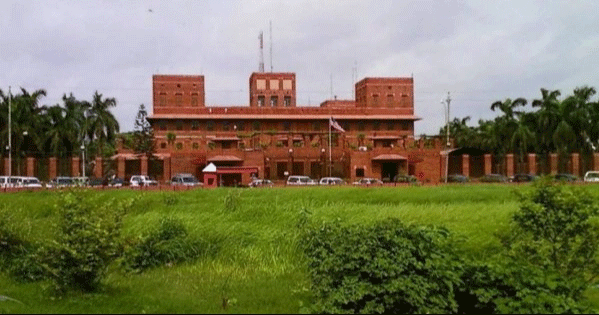Govt in search of Tk 3.25 tr loan
Budgetary support for next financial
Zarif Mahmud: In the budget of the next financial year (2024-25), the government has initially set a target of Tk 3.25 trillion of debt. A major part of this will be taken from the banking sector. The sum of which is more than Tk 1.50 trillion. In addition, foreign loans of more than Tk 100 million ($11.7 billion) will be taken. More than Tk 1 lakh 6 thousand crore have to be calculated for the interest payment of this huge amount of debt, which is estimated at Tk 94,376 crore in the current financial year.
However, this is the first time that no money will be borrowed from the savings account. Savings bonds are being reined in to meet IMF conditions. This international donor agency has given Bangladesh a loan of $4.7 billion, against which the condition is to reduce borrowing from savings bonds. Now the government is walking on that path. The outline of the mentioned domestic and foreign loans will be announced in the next budget. It was recently approved by the Coordination Council meeting on Monetary and Currency Exchange Rates. The meeting was held under the chairmanship of Finance Minister Abul Hasan Mahmud Ali. This information was found in the relevant sources.
Before this, soon after assuming the new responsibility, Abul Hasan Mahmud Ali held a meeting with the stakeholders to review the country’s macroeconomic situation. There was a wide discussion about the debt situation of the government. Especially regarding the debt repayment pressure, the Secretary of the Economic Relations Department Shahriar Quader Siddiqui said, “The amount of debt repayment will increase in the financial year 2026-27 as the loan received from Russia and the mega project are scheduled for repayment. $53 million is expected to be paid in that financial year. It is then calculated to repay $519 million in the financial year 2027-28 and $507 million in the financial year 2028-29. This trend of growth will continue till 2030, but after 2034 the debt repayment pressure will decrease.
If you want to know about this, the former caretaker government’s finance advisor Mirza Azizul Islam told Daily Industry that it is necessary to see where the loans taken in the past have been used. It remains to be seen whether the debt repayment capacity will increase in the future or not.
He also said that overall, the ratio of debt to GDP is not bad. But even if there is reason not to be alarmed, take loans with caution. Efforts should be made to take flexible (low interest) loans from donors including World Bank and IMF. I discourage private sector borrowing from abroad. Because these loans come and go suddenly, putting pressure on the reserves. Besides, their loan terms and interest rates are high.
Former senior finance secretary Mahbub Ahmed told Daily Industry that the government’s debt-to-GDP ratio is about 22 percent. In many countries of the world, this ratio is more than 70 to 100 percent. But there is the matter of our ability to repay the debt. Next year’s debt and interest payments will be about 5.59 percent of our total remittance and export earnings. Analyzing this data, it can be seen that the level of borrowing is still at a tolerable level. But those who are telling the government to be careful in taking loans are right. Care must be taken. Loans should be selected for those projects which will not cause any hindrance in repayment and will help in investment. Otherwise, it will not be right to take a loan anywhere.
Analyzing the debt statistics, he further said that 63 percent of the current total debt is taken from the domestic sector, while the remaining 33 percent is foreign debt. And about 80 percent of the loan sources are from the World Bank, ADB and Japan. The loans of these companies are flexible. In addition, 7 percent of the loan is taken from China, 6 percent from Russia, one percent from India and the remaining loan is being taken from other countries.
Ahsan H Mansoor, executive director of the Policy Research Institute, believes that to deal with this discomfort with foreign debt, the flow of debt must be reduced now. In particular, borrowing on commercial terms, i.e. suppliers’ credit should be reduced. Besides, to increase debt repayment capacity, revenue income, exports and remittances should be increased. But the reality is that exports are dependent on a commodity, which is highly risky. Again, remittances are not increasing at the expected rate. Remittances are not growing due to money laundering. But if we could send skilled workers, then in this case the growth would increase a lot.
It is known that there is a risk that the government’s foreign debt will increase further in the next two financial years. As a result, the payment pressure will also increase. In the same year i.e. 2024-25 fiscal year, a revenue collection target of Tk 5 lakh 31 thousand 900 crore has been fixed. According to the review, only 20 percent of the new fiscal year’s revenue will be spent on debt repayment. But if the collection does not increase at the desired rate, this large expenditure will put pressure on the economy.
A senior official of the finance department involved in this process said that the size of the next budget is being kept within 14.2 percent of the GDP. But according to the scale of the economy, the size needs to be bigger. Doing so will increase the deficit. And more loans have to be made to meet that deficit.
It is known that the economy of Bangladesh is already under pressure due to the dollar crisis and in the meantime, the loan installments of some big projects have started to be paid from this year. Besides, exports and remittances are not increasing as desired. Analysts fear that if the supply of dollars is not increased in such a situation, the crisis surrounding the foreign debt may intensify. According to them, many are worried about what the situation will be when the principal payments of the mega projects start.
According to the government, the current debt ratio is equal to 37.34 percent of GDP. However, according to International Monetary Fund (IMF) criteria, a country’s borrowing level of up to 55 percent of its GDP is considered risk-free. As a result, the government concerned believes that the level of debt is still risk-free. However, experts say, even if the debt to GDP ratio is low, revenue, exports, remittances will increase and the value of the dollar will be at risk. Income growth in these sectors and the simultaneous reduction in foreign debt flows could create huge pressure in the next few years.
According to sources from the Finance Department, the country’s external debt status is Tk 8 lakh 74 thousand 562 crores and domestic debt is Tk 9 lakh 78 thousand 577 crores till December.
President Joe Biden tests positive for COVID-19 while campaigning in Las Vegas, has ‘mild symptoms’
International Desk: President Joe Biden tested positive for COVID-19 while traveling Wedne…








